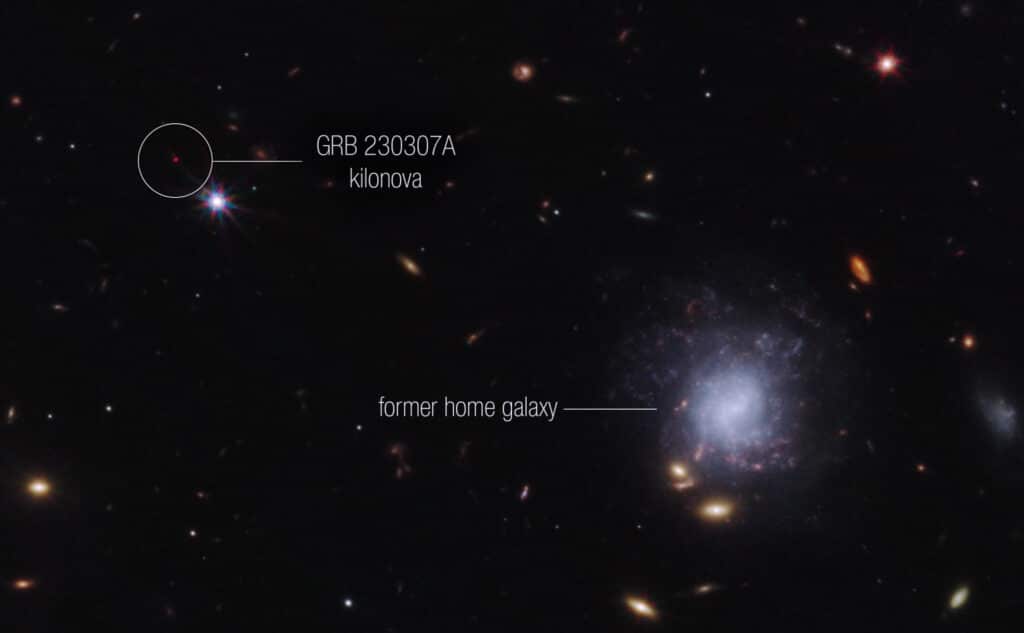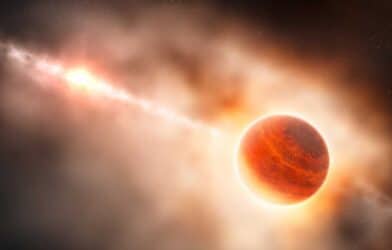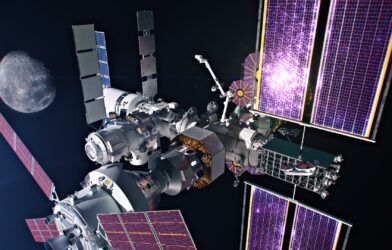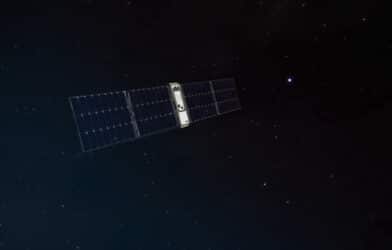Scientists have captured a rare cosmic event of a neutron star merger whose explosion caused the second-brightest gamma-ray burst ever seen. In a collaboration between multiple space and ground-based telescopes, including NASA’s James Webb Space Telescope, a team of scientists has observed an exceptionally bright gamma-ray burst known as GRB 230307A.
Their study has identified a neutron star merger as the source of this explosion and provided crucial insights into the origin of rare elements, such as tellurium, in the universe.
This research is now challenging our understanding of cosmic phenomena and highlighting the immense potential of space observatories like Webb. The findings could revolutionize our knowledge of how the universe’s rarest elements are created.
“Just over 150 years since Dmitri Mendeleev wrote down the periodic table of elements, we are now finally in the position to start filling in those last blanks of understanding where everything was made, thanks to Webb,” says study lead author Andrew Levan, of Radboud University in the Netherlands and the University of Warwick in the United Kingdom, in a media release.
The study focused on kilonovae, which are explosive events resulting from the merger of neutron stars with either black holes or other neutron stars. While these events have long been theorized as potential sources of rare elements heavier than iron, solid evidence has been elusive due to their rarity.
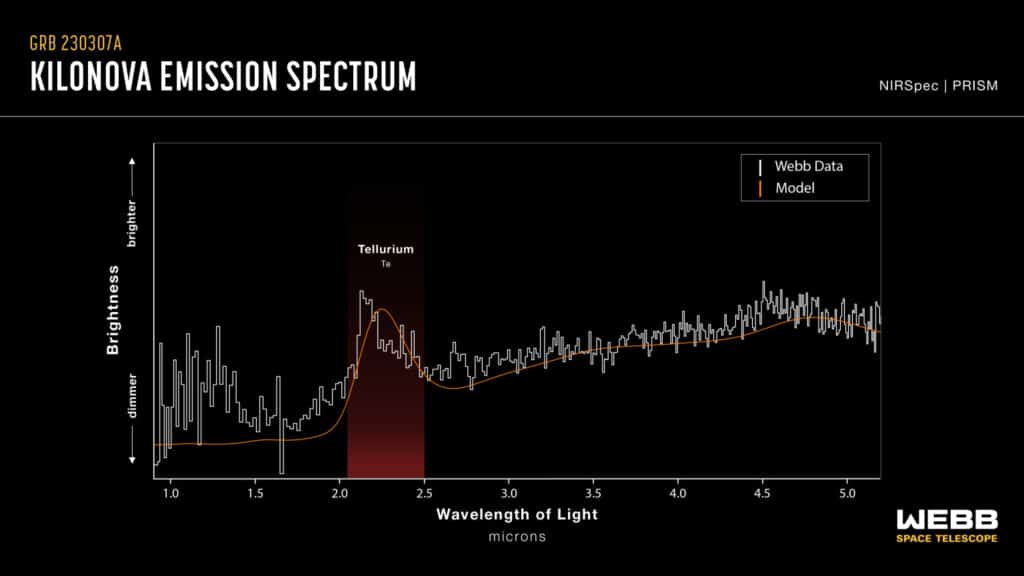
Kilonovae are extremely infrequent, making them challenging to observe. They are often associated with short gamma-ray bursts (GRBs), which were traditionally believed to last less than two seconds. However, the case of GRB 230307A is unique. Detected by Fermi Gamma-ray Space Telescope in March, it stands out as the second brightest GRB observed in over half a century, shining about 1,000 times brighter than a typical gamma-ray burst observed by Fermi. Despite its duration of 200 seconds, placing it in the category of long duration gamma-ray bursts, its origin is different.
“This burst is way into the long category. It’s not near the border. But it seems to be coming from a merging neutron star,” says study co-author Eric Burns, member of the Fermi team at Louisiana State University.
The collaboration of multiple telescopes, both in space and on the ground, allowed scientists to gather a wealth of information about this unique event as it unfolded. Their efforts demonstrate how satellites and telescopes work together to capture the dynamic changes in the universe.
The research revealed that the optical/infrared counterpart of GRB 230307A exhibited the characteristics of a kilonova, appearing faint, evolving rapidly, and becoming distinctly red. These hallmarks indicated the presence of tellurium, an element even rarer than platinum on Earth, in the aftermath of the explosion.
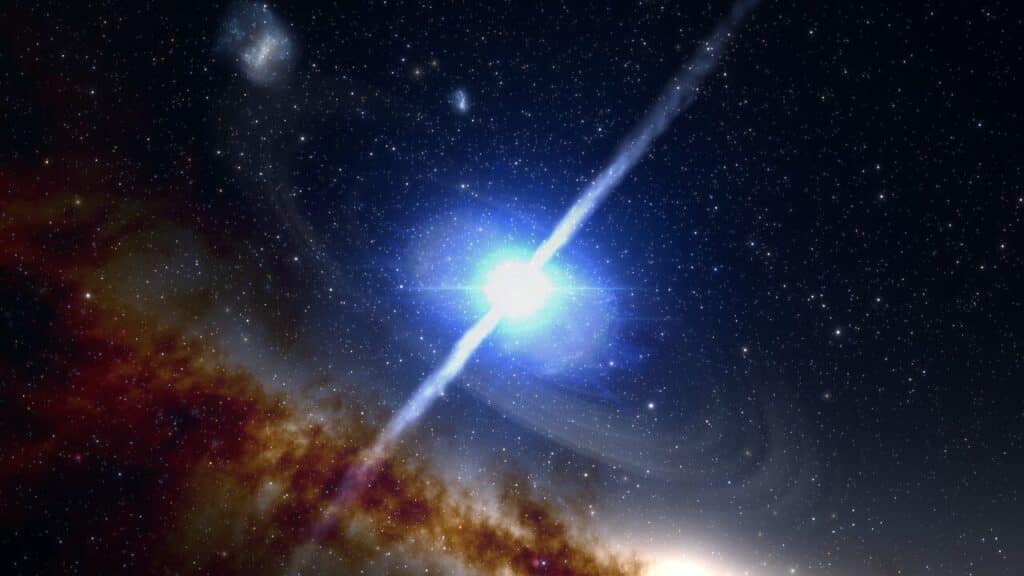
Webb’s Near-Infrared Camera (NIRCam) and Near-Infrared Spectrograph (NIRSpec) instruments played a pivotal role in observing this kilonova. These instruments detected broad spectral lines indicating high-speed ejection of material. Among these lines, tellurium’s unique signature was detected.
The discovery led scientists to pinpoint the location of the neutron star merger, located in a spiral galaxy approximately 120,000 light-years away from the merger site. This remarkable journey of two neutron stars, initially part of a binary system, saw them survive two separate explosive events before merging hundreds of millions of years later.
As the study concludes, the increasing synergy between space and ground-based telescopes offers exciting opportunities for future research on cosmic phenomena. NASA’s upcoming Nancy Grace Roman Space Telescope, with its exceptional field of view, is expected to enhance our understanding of such rare explosions.
“Webb provides a phenomenal boost and may find even heavier elements,” says study co-author Ben Gompertz, of the University of Birmingham in the UK. “As we get more frequent observations, the models will improve and the spectrum may evolve more in time. Webb has certainly opened the door to do a lot more, and its abilities will be completely transformative for our understanding of the universe.”
The study is published in the journal Nature.
